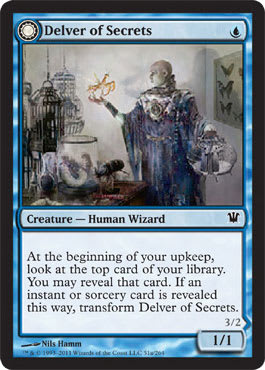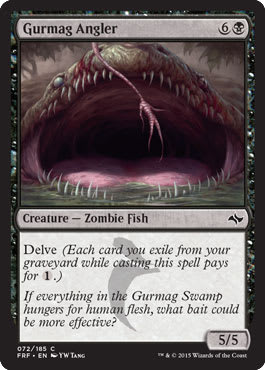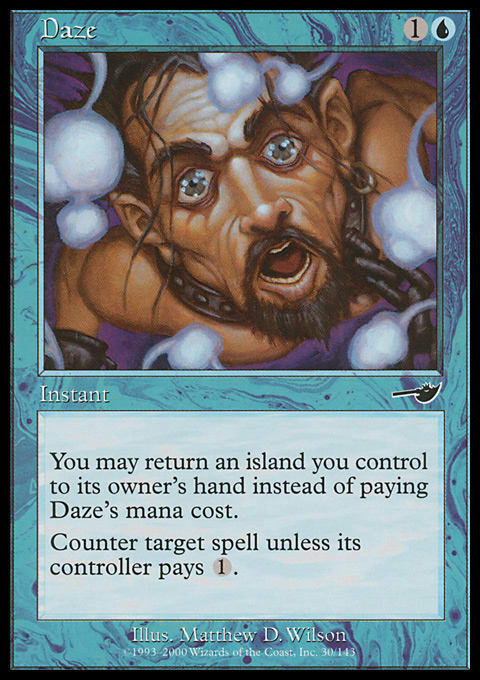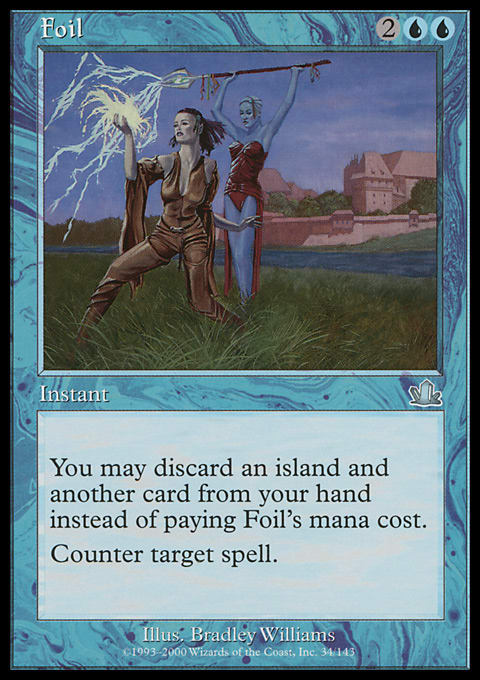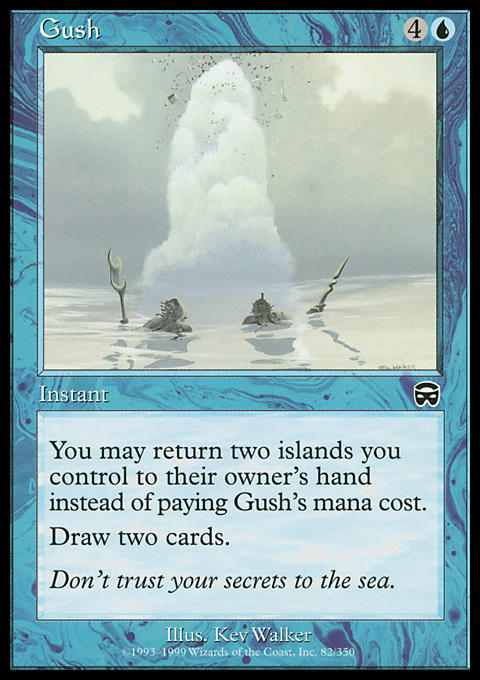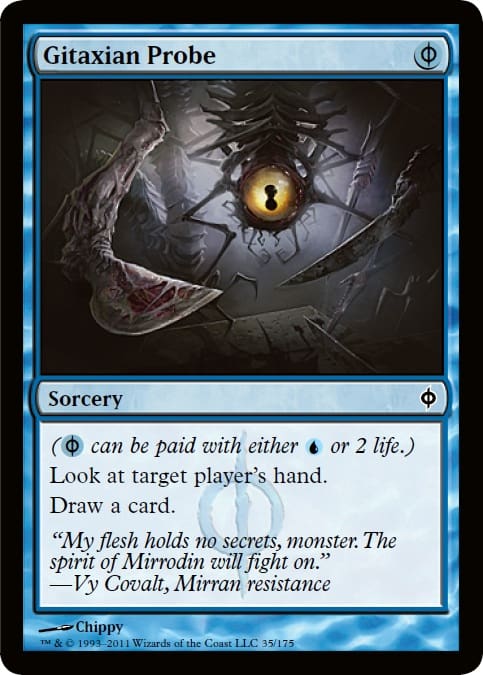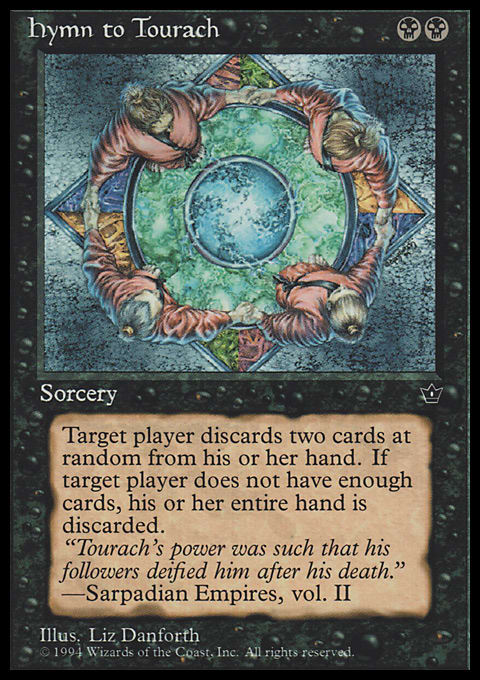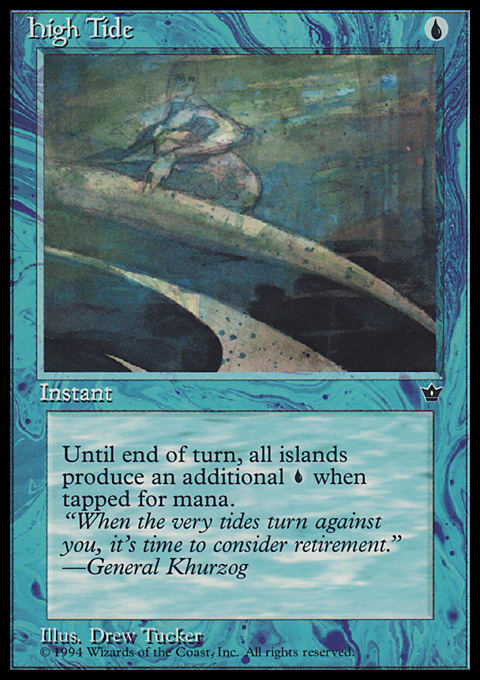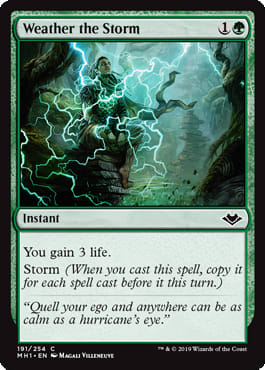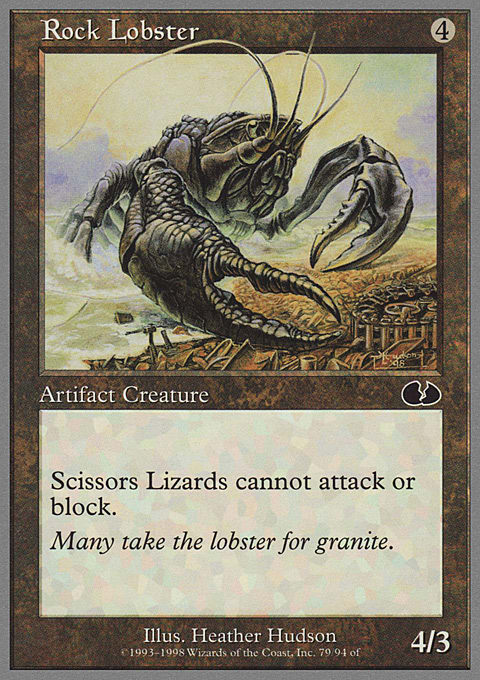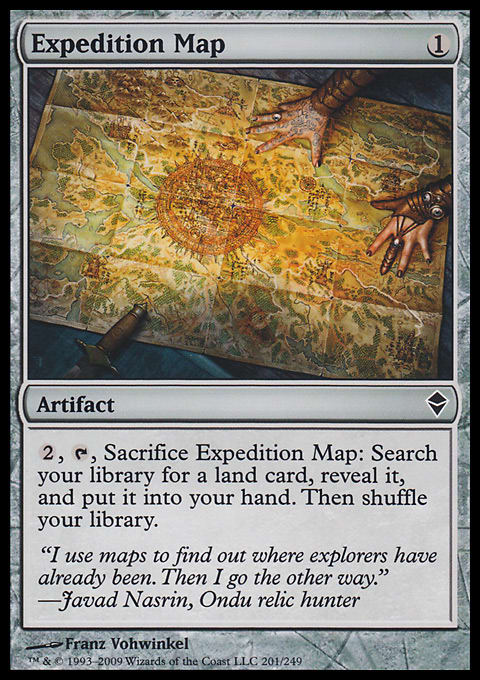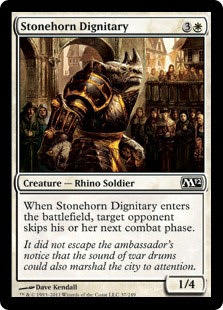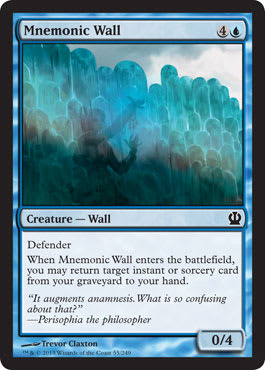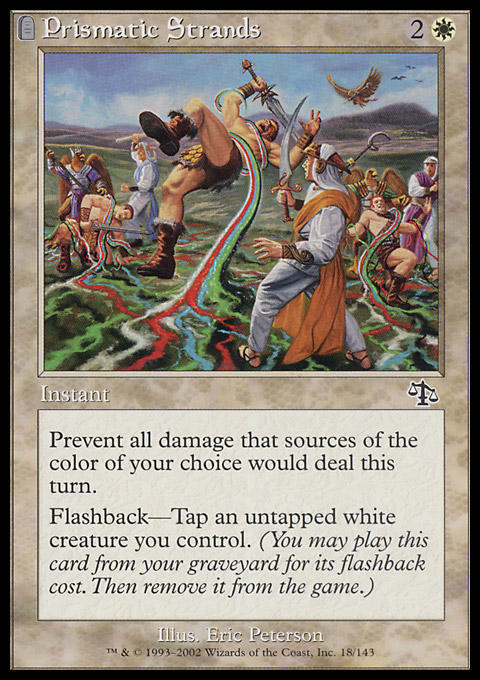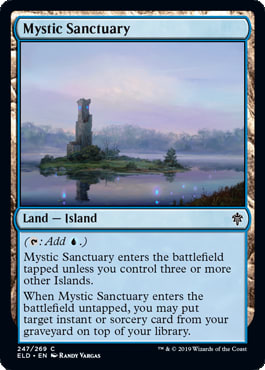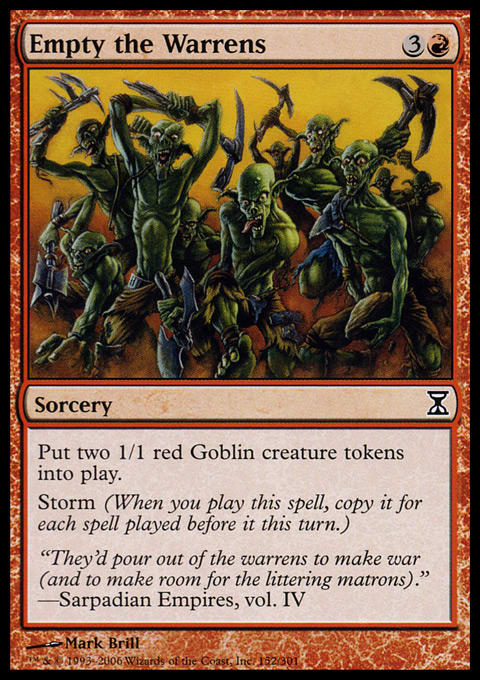Just shy of a year ago, I put out an article titled "Shaking the Pillars." The intent of this article was to examine the state of the Pauper metagame and the need for bans given the increased dominance of Dimir Delver at the time. In the year since then, we've seen multiple cards banned, the release of five new sets (including Theros Beyond Death) that brought new cards into the format, and even format unification.
Given all of the things that have happened since the last piece, I felt that it would be a good time to revisit a lot of the ideas in "Shaking The Pillars" and see where the format stands now. Is it healthy? Is it due for a ban? What about unbannings? I hope to tackle a lot of these and more today, so buckle up and let's explore the current state of Pauper.
Recapping the Pillars
First, let's take a look at the ideas presented in "Shaking the Pillars." The core of the argument was that there were three primary pillars to the Pauper format: Delver decks, Tron decks, and Boros decks. Each one played a role at the center of the format, acting as a foil to one another. Delver decks beat Tron decks, Tron decks beat Boros decks, and Boros decks beat Delver decks. The rest of the metagame was then structured around this - trying to find ways to battle effectively against the top decks and one another.
For awhile, things were looking pretty balanced, if somewhat skewed toward the top. Then we started to get more and more competitive events as well as a heavier push in support of the format in 2018 during a period when Standard was pretty bad. With such a heavy influx of competitiveness, players began to figure out the best decks and fine tune them to their maximum potential and the ability for the lower tier decks to compete started to fade. The meta slowly shrunk and whole archetypes were swallowed up in the process. This got worse toward the end of the year in the advent of UBxD, the modern version of Dimir Delver.
This new Dimir Delver list was inspired by the then new Dimir Death's Shadow deck that had begun showing up in Legacy following Pro Tour 25th Anniversary. Now, we don't have Death's Shadow in Pauper and we're not looking to lose a ton of life or anything. Instead, it took on the approach of low cost - or better yet completely free - spells to control the board, get cards in your graveyard quick for a Gurmag Angler or two, or else kill with a couple early flipped copies of Delver of Secrets. The deck was a near immediate powerhouse and quickly began taking over the field, even starting to completely replace the longstanding Izzet Delver.
Then Ultimate Masters was released, and with it came Foil. Upon seeing the initial preview, a lot of players thought 3-for-1ing yourself wasn't what you'd want to be doing in the format. Then players started picking up on the option of playing Gush with Foil, as you could pick up Islands to discard. Players tried this combination in small numbers at first, but they quickly began upping them as they realized just how well it worked with Dimir Delver's game plan.
Soon, the deck went from being one of the format's top decks to being the best thing you could be doing. The deck completely pushed one of the main pillars of the format - Tron - out of the format entirely and the top bracket became Dimir Delver vs. Boros Monarch. Other decks would make some appearances still, but by and large that didn't matter much. It was Delver vs. Boros all day. And from there I felt that it was time to discuss balance.
The key was talking about what to hit while trying to achieve a sense of balance. The concern was that, as mentioned before, each pillar kept the other in check. That is, of course, until Tron fell away from the meta nearly completely and we were left with basically a two deck format, where all the other decks merely played musical chairs around them. The rationale is as follows: if you ban something from Dimir Delver then it likely becomes inevitable that you'll need to ban something from Tron, then Boros, and so on.
To solve this, I proposed the idea of hitting all three simultaneously: ban Gush, the Monarch cards, and Ghostly Flicker (as well as possibly Displace). By doing this, you knock each deck down a notch or two in power level, but don't completely remove them from the metagame. In doing so, you can find a way to maintain the balance the format has enjoyed for some time.
A Year of Change
Now it's time to look into what happened in the last year and see how this idea of maintaining format balance has changed. "Shaking the Pillars" dropped shortly before the release of Ravnica Allegiance, and when that set dropped, very little changed. Skewer the Critics became a mainstay in Burn, Faerie Duelist occasionally showed up as a cute way to stop Inside Out Combo, and a couple content creators came together to create a fun, if janky, Persistent Petitioners deck.
The ban and restricted update that came along with the release of Ravnica Allegiance, however, saw the banning of only one card: Krark-Clan Ironworks in Modern. In the article, however, Ian Duke noted the concerns among players about the interaction Gush and Foil. They determined that given how recently Foil was added to the format, and based on their data at the time, that it would be premature to ban anything just yet, but that they would continue to monitor the metagame.
Another B&R update came and went on March 11, 2019, this time with no changes affecting the format. The player base continued to grow divided on the issue of banning any cards in Pauper. A number felt things were healthy while another side had actually begun to state they were unwilling to play the format in its current state.
Then, on May 20, a bomb was dropped that rocked the Pauper community: Gush, Gitaxian Probe, and Daze were all banned in Pauper. This was the result of the continued dominance of the Dimir Delver archetype, which was enjoying a 55% win rate online. They looked at a large pool of cards and Ian Duke discussed their rationale for a number of the cards in the announcement, which you can find here.
These bans, which have collectively become known as "Blue Monday" within the community, were tremendously controversial, as one might expect. I often liken the banning of Gush to the banning of Splinter Twin in Modern: it was a card that a large number of the player base felt - and still continue to feel - was fine for its format, but had also likely overstayed its welcome. Many players felt that Gush should've stuck around and Foil should've left since its addition to the format made Dimir Delver that much more oppressive. Wizards felt differently, noting that Gush played unfairly by allowing more spells and less lands, further fueling cards like Augur of Bolas and Delver of Secrets, and indicating that they felt it was the more likely card to break in the future.
Gitaxian Probe felt like somewhat of an oddball to some. After all, it didn't have quite the far-reaching impact that it did on Pauper as it did in formats like Modern and Legacy. In fact, it was usually used as a way to make sure the coast was clear for decks like Izzet Blitz and Inside Out Combo and honestly rarely felt too oppressive in those decks. This changed, however, when Dimir Delver and Burn both began to run it to fuel their strategies and it allowed them to play games with perfect information, thus bettering their gameplay against the entire field. By the time the ban came around, it felt more sensible, if still a bit weird.
The one that left players scratching their heads, however, was Daze. This card was one that only saw play in the Blue tempo decks like Mono-Blue Delver and infrequently in lists like Izzet Blitz. It did see a heavier amount of play in Dimir Delver, however, which no doubt played a factor in its banning. A lot of players felt this one wasn't quite as oppressive and probably could've stuck around. Wizards' rationale was that they wanted to send a statement that they wanted minimal free spells in the format and they wanted to provide more "shields down" opportunities for players to play what they wanted.
Following the banning, Tron immediately took over, confirming the fears of numerous players that Tron was the new undisputed champion of the format. It didn't take long for that to change and within a few short weeks, Boros lists started coming in for a chunk of Tron's metashare. As a result, Tron did in fact see a drop in power soon after. However, we wouldn't really get a good opportunity to see how things would shape up as Modern Horizons was released just four short weeks after Blue Monday.
Before I get into all the nonsense regarding that set, however, I want to take a brief look at what happened just after the release of Modern Horizons. On June 27, Wizards of the Coast announced that they were officializing Pauper as a format and unifying the legalities between online and paper. In addition, they were preemptively banning three cards: Sinkhole, Hymn to Tourach, and High Tide. With regards to Sinkhole and Hymn, the reasoning was that these cards would create play patterns too unfun for most players. With High Tide, there were concerns over the history of the card as a combo piece and its interaction with the other new card Merchant Scroll. These too, were somewhat controversial, with some suggesting that they should've been given a fair shot in the metagame before being banned outright.
In the end, only a handful of cards made any meaningful appearances. These largely included Goblin Grenade, Mystic Remora, the ABU Elemental Blasts, and to lesser extents Desert, Sunken City, Ashes to Ashes, and Tormod's Crypt. Surprisingly, a few standout cards like Ashnod's Altar still aren't seeing any play whatsoever. It was a sweet and overall interesting addition to the format, even if it wasn't doing anything too swingy to it.
All right, now let's talk about Modern Horizons and the effects it had on the format. Make no mistake: they were quite large. The biggest impact was that Arcum's Astrolabe made mana fixing a thing of the past. It was cheap, perfect mana with very little drawback that also acted as a pretty easy engine. It's much easier to play Astrolabe, bounce it with Kor Skyfisher, and play it again all for four mana than it would be to do the same with Prophetic Prism, which would cost six total in the process.
Since it filtered mana so easily and with so little cost, decks began splashing cards left and right. It got so bad that you began to see decks like Four-Color Mono-Black Pestilence (yes, you read that right) popping up, being half serious, half joke. If you were looking to play anything that wasn't mono-color, you pretty much had to run Arcum's Astrolabe, and as such it warped the meta pretty heavily. I could go on about why this card posed such an issue, but I only have so much space to discuss it here. If you want to see a deeper dive into why the card is problematic, check out my article "The Problem with Arcum's Astrolabe."
The incredible mana filtration the card provided created a whole new archetype that took elements of play from long-standing builds of Boros Monarch, Izzet Delver, and Tron and mashed them into one pile. The result was Jeskai and it came in many flavors. Some were much more midrange, some were more control. A number of builds even turned into four and five color builds simply because they could. These decks, along with the likes of Tron, also revealed another concerning card: Ephemerate. Players thought this card wouldn't be nearly as good as a once per turn Ghostly Flicker, but as it turns out costing one mana over three is a big deal. This difference allowed players to hold up more removal and counter magic and play the long game more effectively.
After roughly four months of a meta being in a state of questionable health, Wizards of the Coast banned Arcum's Astrolabe on October 21. This ban took some players by surprise, as this ban was a date that had been pushed up in order to ban Field of the Dead in Standard to provide a healthier meta at upcoming Mythic Championship events. There had been an update less than two weeks prior, so why now? What I suspect happened is that Wizards noticed the amount of people saying they wanted, expected, or were otherwise hoping a ban would happen all over Twitter and the like and decided to take action following the huge reaction.
Some players felt this was again the wrong choice and that Ephemerate should've gone. However, since the banning of Arcum's Astrolabe, Ephemerate has seen a tremendous drop in overall metashare. It still shows up in Tron lists and occasional Familiars (or similar) lists, but that's about it. What's more, it should also be noted that the problems of Astrolabe aren't just with Pauper but have also extended somewhat into Modern and Legacy.
That's not to say Modern Horizons was all bad for Pauper, though. In fact, it brought some other decks some excellent new toys.
Weather the Storm became a huge player for a period, especially thanks to Arcum's Astrolabe. It was so prevalent, in fact, that it became one of the main cards people talked about in ban discussions. Now it's more of a roleplayer in sideboards, acting as a way to fight back against super aggressive decks like Burn. It's also become part of certain builds of a super fringe, yet popular, deck known as Fishelbrand. With this deck, you generate a large storm count, play Epicure of Blood, and then cast Weather the Storm to win the game.
Savage Swipe also entered the meta, revitalizing Stompy and bringing it up once more as a top deck in the meta. Winding Way also provided Elves with a fresh way to play the deck and breathed new life into Slivers as well. The latter deck also got the sweet new addition of Bladeback Sliver to help fight against a format that had been so dominated by Fog effects for such a long time. And, of course, we saw fresh staples for Mono-Black and Faeries lists in the form of Defile and Faerie Seer, respectively.
Now, though, it's been about three and a half months since Arcum's Astrolabe was banned and some fresh discussion of format health has been brewing. So, it's time to ask the question:
Is the Meta Healthy?
Examining format health has a number of factors, and many of them aren't things that we can necessarily observe as players to the extent Wizards has. They look at things like when cards are played in matchups, how powerful are they, and how strongly they can potentially end the game. What we can observe, though, are the tournament results that we can see. This generally amount to the Magic Online Pauper Challenges, Leagues, and occasional PTQs.
I'm going to go on a quick detour for a moment to talk about paper events, as unlike the events on Magic Online, they're significantly harder to track. A common criticism we hear from players is why doesn't Wizards take stock of events like Italy's large Paupergeddon or Brazil's numerous events? The answer is, quite simply, a lack of information and data. There's only so much that Wizards can gather when they don't know the exact field, which player is on what, and how their records aligned. When ChannelFireball released full decklists submitted from various Grand Prixs, players were able to put together exact win percentages of various archetypes because there was so much information.
If you don't provide truly detailed information, then Wizards is highly unlikely to pay very much attention to it. A top eight doesn't tell them much. A full list of 300 decks and matchup data, on the other hand, might just get them to take a look your way. If you want your data to count, then the tournament organizers need to step up and provide the maximum amount of data that they possibly can. I highly recommend talking to your TO and see what can be done to help on this front.
Back to the matter at hand, determining format health usually involves figuring out if a deck has a higher performance rate over other decks. That's not the only measure Wizards looks for, though. They also look to see if a format is fun and enjoyable to play. Is it diverse, with a multitude of decks? Are decks continually making rounds go to time? There's a lot that goes into the decisions to ban a card and it's not something that should be taken lightly.
When I look at things, I personally like to look at the decks played from week to week. One problem we saw during the days of decks like Dimir Delver was that it, as well as decks like Boros Monarch, would stay at the top with little variation. This was stagnant and somewhat unhealthy. Pauper has been at its best when the format is in a state of ebb and flow, with decks coming and going in just how good they are in the meta at a certain point in time.
It's common to hear players talk about Pauper as a rock, paper, scissors format, and when it's healthy that's true. It's what allows for this natural ebb and flow as decks played one week are slowly beaten out of the format within a few weeks. After that, another set of decks comes along that preys on those, and so on. To me, I believe this is what we've been seeing quite a bit of in Pauper since the banning of Arcum's Astrolabe.
As expected, the format kicked off very much the same way it did after the Blue Monday bannings. In other words, we started off with ton of Tron the first week, and the numbers then dipped a bit giving way to decks like Boros Monarch and Boros Bully. We also soon after began to see Izzet Faeries/Delver begin to re-emerge thanks to the printing of Mystic Sanctuary in Throne of Eldraine. This provided plenty of small critters for Mono-Black Control, Pestilence, and Rakdos Monarch to prey on. From there, it circled back to Tron coming in hard and heavy during the week of the Magic Online Pauper Championship event.
This feels very much like a balanced metagame if only on this metric alone. However, there is still a lot of concern that Tron may be a little too good and that it's giving way to much more unfun gameplay in the format. One thing I discussed last year in "Shaking the Pillars" was how decks had become much more Fog-oriented, thus pushing out more aggressive strategies. A few decks found new ways to adapt. Stompy got the sweet new Savage Swipe tech previously mentioned, Bogles started running Fling and Essence Harvest, and Elves went in even harder on Mob Justice variants.
Despite that, some of the decks have gone harder than ever. Tron, for example, doesn't just stop you with Moment's Peace. If that was the case, it would be even easier since you could always just run copies of Flaring Pain. Instead, they've taken to looping Stonehorn Dignitary, in part thanks to the extra addition of Ephemerate to Tron builds. This creates an unfun setting where players are often locked out of a game and merely sit to try finding exactly what they need to try and hopefully get them out of their predicament. Many Prismatic Strands decks, Delver with its endless draw engine thanks to Mystic Sanctuary and Tragic Lesson, and the constant removal lists of Mono-Black and the like similarly just shut a lot of players out of playing.
All of this has led some players to wonder if the format isn't really as healthy as it looks on paper. It certainly seems balanced, and it'd be difficult to deny that, but if it's not fun to play the actual games, then is it really fun anymore? I've also heard a number of players express that after playing week after week and seeing the same decks over and over and over with little change over the years, they find that they have less motivation to play. At some point, it just gets boring and uninteresting when there's no freshness being brought to the competitive table.
And this brings us to the topic of bans. Should they happen or should they not to improve the state of the format? My personal feeling right now is that as things are balanced, nothing is likely to change for some time. What's more, we just got a whole host of sweet cards in Theros Beyond Death and a pretty decent number look like they have some potential to impact a number of decks in the meta. They may even bring with them a whole new archetype or two depending on how things settle and what people are able to work out.
Regarding Tron
Despite the freshness and the ebb and flow, however, I expect we'll see a continued dominance from Tron. It's simply the best at doing what it does and can adapt to any metagame. As a result, I truly wouldn't be surprised if we saw something banned from Tron within roughly six months' time. The real trick then becomes: what do you hit from the deck if you were to ban something from it?
The real power of Tron comes from its resilience, after all. Some players suggest the answer to besting Tron is to blow up their lands. However, Tron runs Pulse of Murasa as a way to get their lands back and gain life to stick in the game. Then they have Mnemonic Wall to bring that back and keep going. Then there's the number of Flicker engines, from Mulldrifter to Dinrova Horror to Stonehorn Dignitary, there's simply no shortage of angles from which the deck attacks.
So let's talk about some of the cards individually then. The deck's power stems from two core elements: the lands and the Flicker packages. The easiest and most elegant solution might be to ban Tron lands, much like how Cloudpost was removed from the format in 2013. However, decks like Temur Tron were actually quite fine and are a more reasonable power level for the format. Some have suggested Expedition Map, which may be a solid choice to have a shot at slowing them down if we want to see them keep things like the Stonehorn lock.
What I think is far more likely to happen is breaking up the Flicker package. The most obvious way to hit this is by removing some of the Flicker effects themselves. As I mentioned in the original "Shaking The Pillars" article, Ghostly Flicker has been doing pretty busted things for quite some time. It's a big part of what allowed cards like Peregrine Drake and Cloud of Faeries to be as stone cold broken, and was played in conjunction with Cloudpost and Temporal Fissure as well. It's been on the fence for quite some time and it might be ready to finally exit.
On the other hand, we also have Ephemerate, which was so strong that people argued with some level of truth that it should've eaten a ban instead of Arcum's Astrolabe. With a small cost for what it does - not to mention how it interacts with Mulldrifter, netting you six cards for four mana - Ephemerate might just be a bit much. If Ephemerate does go, however, I assure you that it will open the doors for Ghostly Flicker to finally be on its merry way. If they ban one Flicker effect because it's too oppressive, it's very likely that we'll see another one too.
And what of Displace? I ultimately don't think that Wizards will go so heavy-handed that they'd ban three Flicker effects at once. Instead, I'd hope they'd keep the weakest of the bunch. Displace still has the game ending effects of Ghostly Flicker in that you loop creatures. However, you lose the ability to do something like Ghostly Flicker a Mulldrifter and Prophetic Prism or Urza's Tower. Instead you need to have two creatures on the board or it won't work If nothing else, this opens up the possibility of Tron slowing down for some decks to try going under it.
The problem with banning Ghostly Flicker, though, is that you not only pretty much dismantle the various Flicker Tron lists in one fell swoop, you also hit other decks quite hard in the process. This especially includes Familiars, a deck that relies on being able to Ghostly Flicker to target lands and creatures to enact its finishing combo. We already saw decks like Inside Out Combo and Izzet Blitz get pretty gutted as a result of the Blue Monday bans and few, if any, new decks have arisen in their wake. It would be a huge loss to see yet another deck fall to the wayside.
As such, some have suggested getting rid of Stonehorn Dignitary so as to make the deck a little more bearable to play against, which is kinda fair. Even before Stonehorn became the norm, however, the deck was already incredibly powerful on the back of looping copies of Moment's Peace. The power of the deck is less annoying to face off with, but the power is still there, and that's what players have been concerned about.
The other card that's been suggested time and again is Mnemonic Wall. But wait, you might say. Don't we have other options in the format as well? Well...yeah, as it turns out. We have Archaeomancer, Salvager of Secrets, Izzet Chronarch, Scrivener, and Anarchist. These are all somewhat more limited compared to Mnemonic Wall. Wall can't be bolted, and unlike the first three of these which can find both instants and sorceries it only requires one colored source. It's unlikely that Anarchist would be played since Tron uses so few sorceries, but Scrivener would probably work just fine in most cases. The problem here is that the inevitability is still very much there.
In the end, I think it's a bit of a tossup in how to make this happen and will largely come down to Wizards' decision making team when they eventually decide to break out the banhammer. Make no mistake: it's coming. At this point, it's just a matter of when. I'm expecting within six months if only due to how heavy some of the post-Astrolabe dominance of Tron has been, but it will ultimately be Wizards' call based on how they view the format. And yes: I can assure you that they are watching the format and care about it, even if you may believe otherwise.
Bannings and Unbannings
On that note, I want to discuss the other areas of the format. I think that, right now, if anything else should be on a watch list for the format it should be the following cards: Mystic Sanctuary and Prismatic Strands.
Yup, you're reading that right, and your first reaction will probably be "what about the monarch cards?" I've had a number of people raise my arguments from "Shaking the Pillars" whenever I talk about how they aren't really an issue at a specific point in time. I still do think the cards are somewhat problematic, if only in the play patterns they inspire, but I've also seen moments where they're frankly not awful. Playing Thorn of the Black Rose in Mono-Black Control and Rakdos Monarch, for example, is interesting and gives the deck some amount of game against the likes of, say, Tron.
Instead, what I feel like is the problem are the cards allowing for the play patterns Monarch decks want. Prismatic Strands is enemy number one there, as it's not only a key Fog effect for these decks, but also a one-sided board wipe. Sometimes you don't even pay mana for it either. It's not uncommon to see Boros decks cast Faithless Looting dumping Strands into the yard and then casting it for free. That...kinda goes against Wizards' whole "no free spells in Pauper" thing, right?
The second card I want to talk about is Mystic Sanctuary. This card is, in short, stupid. It left players scratching their heads at what on earth possessed Wizards to print a fetchable land that could put, say, a Terminus from the graveyard on top of the library, only to draw it again. While we can't do that in Pauper, it still becomes an incredible engine with cards like Deprive, Tragic Lesson, and even Ghostly Flicker. It's arguable that the engine it creates with Tragic Lesson in particular has made Izzet Faeries/Delver decks that much more resilient than they ever were with Gush.
Speaking of, the existence of Mystic Sanctuary in Pauper also hurts other cards' chances at being unbanned - including not just Gush, but also Daze and High Tide. Gush would simply be flat out broken with Mystic Sanctuary and it would make Delver decks stronger than ever. I don't think we'd see Gush unbanned even if Mystic Sanctuary left the format, but it's still worth noting just how incredible that kind of interaction would be.
Daze is also kinda ridiculous with it, but isn't nearly as bad since it's not quite a hard counter like Deprive is. I'm actually in the camp that if Sanctuary gets banned, then I'd be fine with seeing Daze come back into the format again. Truthfully, I'm not too upset it got banned in the first place, but also recognize that it really probably didn't deserve its ban in the first place. I also think that High Tide decks would actually have been quite reasonable in the format as they're kinda just worse Familiars lists. With something like Mystic Sanctuary around it makes it hard to justify allowing back, however.
As mentioned in a previous article of mine, I also feel that Empty the Warrens might be somewhat fine bringing back as a trial attempt. The card is significantly more fragile than the likes of Grapeshot and, while it can win turn zero with the right draws, it's pretty unlikely to see happen immediately. It's one I'd look at cautiously, but might just be something the format could use right about now and I'd be interested in seeing Wizards bring it back for a trial run without Grapeshot. If it's too oppressive, then that's fine - just kill it again and we can be on our merry way once more.
Conclusion
And so we reach the end of our return to "Shaking the Pillars." This time around I'm not so much pleading for Wizards to take action like we needed last year, but more to help others understand the state our format has been in since and where it can go from here. I do think we're going to see more bans within the coming months, but this all depends on how dominant one or two specific decks end up continuing to be. All we know is that these bans can come at any moment due to Wizards' removal of scheduled B&R updates, so stay vigilant and ever-ready for the possibility of something coming.
All told, though, we're seeing a fresh year of excellent competitive Pauper play not just on Magic Online but in tabletop as well. There's more and more big events showing up for the format, and Latin America is even getting a number of Pauper events that qualify players for the Players Tour. I'm expecting 2020 to be another excellent year for the format of commons. It's a bright future with play that can only get better and better - especially as Wizards puts the pedal to the metal again when it comes to the power level at the common rarity. And I for one can't wait to see what comes next, right around the corner.
Kendra Smith
Twitter: @TheMaverickGal
Twitch: twitch.tv/themaverickgirl
YouTube: Kendra Smith













